During the 19th century Germans immigrated to America for many reasons. Among the most common reasons were the economic opportunities and the availability of farm land in America. Both of these things were an important part of my great-great-grandfather’s life.
After emigrating from Bavaria in June of 1849 Friedrich Schinnerer settled down and lived the rest of his life in the same general area– the Rockford/Willshire area of Ohio. He first settled in Dublin Township, Mercer County, along the St. Marys River. By August of 1849 he was running John Rhodes’ saw and gristmill there.
In June 1850 he purchased a little over 115 acres of land and the mill from Rhodes for $3300. The land was located in Section 6 of Dublin Township, about two miles west of Shanesville [now Rockford]. There were three old cabins on the land and he and his family likely occupied one of them. [1]
Friedrich built another mill in about 1859. [2] I do not know if it replaced the original mill or if it was a second mill. His occupation was shown as “flourist” in the 1860 census and he had an apprentice at the mill, John Shum, 18, probably the son of Georg Martin and Anna Maria (Pflüger) Schumm, who died in the Civil War. [3]
In 1860 Friedrich’s 115 acres of farm land was valued at $3000, with 40 improved and 65 unimproved acres. His farm implements were valued at $150 and he had livestock: 6 horses, 5 milk cows, 3 other cattle, 18 sheep, and 47 hogs, all valued at $600. Slaughtered animals were valued at $115. There were 300 bushels of Indian corn, 40 pounds of wool, 1 bushel of peas & beans, 40 bushels of Irish potatoes, 300 pounds of butter, 15 tons of hay, and 12 bushels of flax seed. [4]
During the next few years Friedrich purchased more farm land in that same area of Dublin Township, near the St. Marys River. He eventually owned about 475 acres.
Friedrich and his family still resided in Dublin Township in 1870, but they would not be there much longer. In 1870 his occupation was listed as miller. His real estate was valued at $22,000 and his personal estate at $3470. He was married to Elisabeth Schumm and eight children were in the household. Also in the household was Lewis Schum, age 19, occupation given as farm laborer. This was probably my great-grandfather, Elisabeth’s brother, who was born in 1851. Two other millers lived near the Schinnerers in 1870 and probably worked at Friedrich’s mill–Michael Wagoner, 40, from Pennsylvania and James H. Brookwater, 20, from Ohio. [5]
At nearly 50 years of age and a miller and farmer for 23 years, Friedrich decided to sell his Mercer County property and move a few miles down the road, near another old town. Closer to the German community where his wife was from and closer to the German Lutheran church they attended. In 1873 he sold the mill and all of his property in Dublin Township and resettled just east of Willshire, a few miles from Schumm.
On 12 March 1873 Friedrich sold five pieces of land, totaling 473 92/100 acres, to Thomas Jefferson “T.J.” Dull for $20,000. The parcels were located in Section 6 as well as in the Black Loon, Charley, and Crescent Reservations. [6] The sale included the gristmill, by then known as Shinner’s Mill. [7] Dull would later build a steam-powered gristmill in Shanesville. That mill, built in 1880, was constructed of brick and used the roller method of processing grain. [8] [9]
In May 1873 Friedrich purchased 140 acres in Section 29 in Willshire Township from William Lamb for $5600. [10] This was once the homestead of Ansel Blossom and was about ½ mile east of Willshire, not all that far from the St. Marys River. Ansel Blossom was one of the early settlers in the Willshire area, arriving in about 1822, and his land purchase in Section 29 was one of the original entries. Ansel taught the first school, was a justice of the peace, and was one of the first postmasters in Willshire.

Friedrich Schinnerer farm in 1882, the former Ansel Blossom farm, settled in 1826 . (1882 Van Wert History, p. 237)
Friedrich gradually purchased additional acreage east of Willshire where he eventually owned about 300 acres. Most of the land was in Section 29, with a few acres in Section 30. Friedrich farmed and he and Elisabeth raised their family on the old Blossom farm. They were active members of Zion Lutheran Church at Schumm, just a few miles down the road. They remained at that home for about 20 years.
In December of 1894 Friedrich and Elisabeth Schinnerer sold the farm, which included the frame home, to their son Henry F. for $1. The farm consisted of 140 acres in Section 29. [11] Henry F. Schinnerer and Louise Schumm married on 1 May 1892 and they moved into the house, where they remained to raise their family. Two of their children, Fred and Lydia, stayed on the old homestead until they passed away in the 1980s. They were the last Schinnerers to own the property. [12]
At the same time in 1894, Friedrich and Elisabeth sold an additional 72 acres to son Henry F. for $1. A portion of this parcel was in Section 30. [13]
It was probably about this time, about 1894, that Friedrich built the brick home, about ½ mile east of the old frame house. Friedrich lived in the brick home until he died in 1905. After Friedrich’s death his widow Elisabeth remained there with their daughter Mollie.
Mollie Schinnerer married Theodore C. Hofmann on 21 February 1911 and in March 1911 they purchased the 100 acres with the brick home for $8662.50 from the other heirs of Friedrich Schinnerer. [14] Elisabeth Schinnerer remained in the brick home until her death in 1917 and the Hofmanns went on to raise their family there.
Friedrich Schinnerer died 5 February 1905 at his home east of Willshire. His son Henry was the executor of his estate, which amounted to $24,928. After the funeral costs and debts were paid and a special legacy of $4500 was given to Amalia [Mollie] Schinnerer, Friedrich’s heirs divided $19,453. Children Lena Huffman, Clara Gunsett, Hannah Scaer, Lizzie Scaer, Sophia Gunsett, Emma Balyeat, and Amalia Schinnerer each received one-eighth. Grandchildren [children of Rosina Schumm, deceased] Clara Deitrich, Minnie Huffman, John, Hannah, August, Willilam, Matilda, and Joseph Schumm each received one-sixty-fourth. Son Henry F. had already received 212 acres of land for $2 and did not receive anything from the estate. [15]
Yes, Friedrich Schinnerer did very well for himself in America. He was an immigrant who came to America with hardly anything but skill, determination, and the willingness to work hard. He was a miller and a farmer who owned nearly 800 acres of land and a prosperous milling operation during his lifetime. He raised livestock and one record indicated that he was an attorney at law, although that is the first time I ever heard that. This Christian couple raised a large family, although they endured the loss of several children.
Yes, Friedrich was successful in many ways.
[1] Mercer County, Ohio, 1853 Plat Book, Dublin Township, Section 6, p. 315 A & B, Fredrick Schinnerer; Recorder’s Office, Celina. A map of the mill’s location: https://karenmillerbennett.com/schinnerer/friedrich-schinnerer-the-flourist/
[2] Sutton, History of Van Wert and Mercer Counties, Ohio, (1882; reprint, Mt. Vernon, Indiana : Windmill Publications, Inc., 1991), 254.
[3] 1860 U.S. Census, Dublin, Mercer County, Ohio, p. 42, dwelling 296, family 300, Frederick Shimer; digital image by subscription, Ancestry.com (http://www.ancestry.com : accessed 5 February 2014); from Family History Library Microfilm 805009, from National Archives microfilm M653, roll 1009.
[4] 1860 U.S. Agricultural Schedule, Dublin, Mercer County, Ohio, p. 13, line 22, Frederick Shiner; digital image by subscription, Ancestry.com ( http://www.ancestry.com : accessed 26 February 2014); NARA microfilm publication T1159, roll 24.
[5] 1870 U.S. census, Dublin, Mercer County, Ohio, ED? p. 32, dwelling 239, family 241, Fredrick Shiner; digital image by subscription, Ancestry.com (http://www.ancestry.com : accessed 26 February 2014); FHL film 552742, NARA microfilm M593, roll 1243.
[6] Mercer County Deeds, Book 19:521-22, Courthouse—Recorder’s Office, Celina, Ohio; Frederick Shinerer to Thomas Jefferson Dull, 12 March 1873.
[7] McConahy, Map of Mercer County Ohio, (1888; reprint as Mercer County, Ohio Combined Atlases, Mt. Vernon, Indiana : Windmill Publications, Inc., 1999), 16. The mill was still known as Shinner’s Mill as late as 1876.
[8] Griffing, Atlas of Mercer County, Ohio, (1888; reprint as Mercer County, Ohio Combined Atlases, Mt. Vernon, Indiana : Windmill Publications, Inc., 1999), 10, 23. [This source lists T.J. Dull as a manufacturer and dealer in roller process flour, feed, corn, meal, etc., and dealer in all kinds of grain.]
[9] Sutton, History of Van Wert and Mercer Counties, Ohio, (1882; reprint, Mt. Vernon, Indiana : Windmill Publications, Inc., 1991), 411. [This source lists T.J. Dull & Co. as proprietors of steam grist-mill, erected in 1880, a brick building, sixty-five horse-power engine, and employs four men. J.P. Dysert, proprietor of two workhouses in this town and one at Mercer, handles about 150,000 bushels of grain annually, is also dealer in general goods; commenced store business in 1872 and opened grain trade in 1878.]
[10] Van Wert Deeds, Book 4:466-7, Courthouse—Recorder’s Office, Van Wert, Ohio; William Lamb to Frederick Shinnerer, 16 May 1873.
[11] Van Wert Deeds, Book 48:144, Courthouse—Recorder’s Office, Van Wert, Ohio; Frederick & Elisabeth Schinnerer to Henry F. Schinnerer, 20 December 1894.
[12] Photos of the farm in 1906 and 2001: https://karenmillerbennett.com/schinnerer/tombstone-tuesday-henry-f-louise-m-schumm-schinnerer/
[13] Van Wert Deeds, Book 37:149, Courthouse—Recorder’s Office, Van Wert, Ohio; Frederick & Elisabeth Schinnerer to Henry F. Schinnerer, 20 December 1894.
[14] Van Wert Deeds, Book 85: 158, Courthouse—Recorder’s Office, Van Wert, Ohio; 13 March 1911.
[15] Frederick Schinnerer will & estate, Van Wert County probate file 4220, Vol. 1327: 510-539; microfilm at Van Wert, Ohio, Courthouse Annex. [Friedrich stated in his will that he had already given each of his children who were of full age the sum of at least $4500. His will was written in 1900 and Amalia “Mollie” was not of age at that time. Also, “…should I advance her [Mollie] any sums and charge her with the same in my account of advancements, such sums are to be subtracted from the amount of this bequest.”]

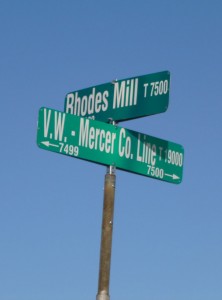
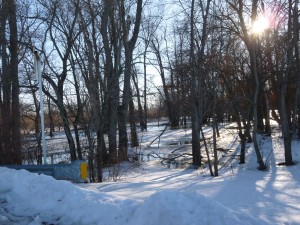
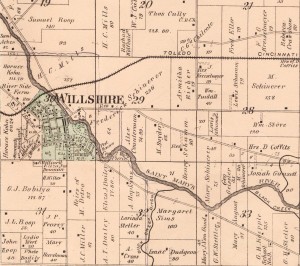
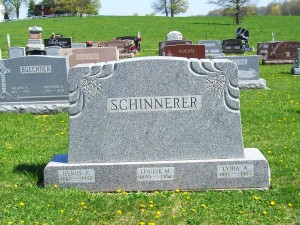
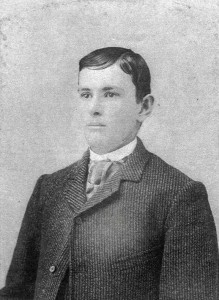
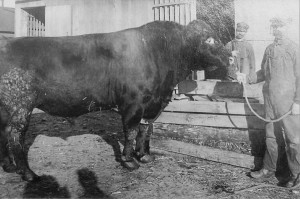
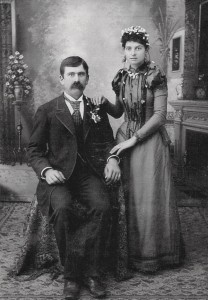
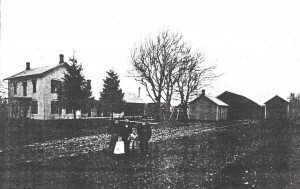
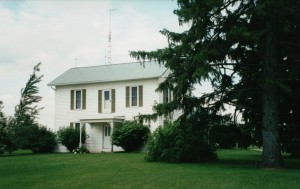
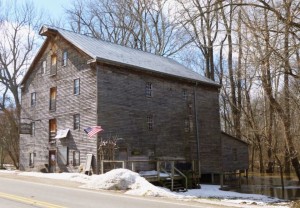
![A burr [mill stone]. (2014 photo by Karen)](https://karenmillerbennett.com/wp-content/uploads/2014/02/Bears-Mill-3-300x225.jpg)
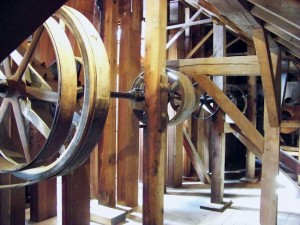
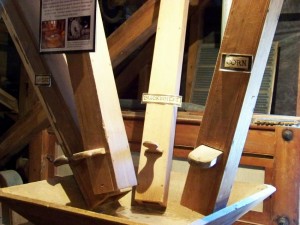
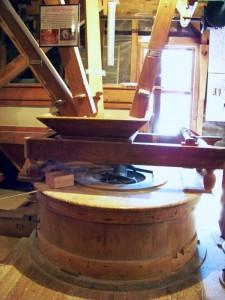
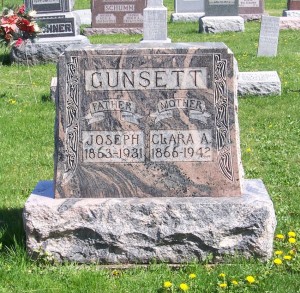
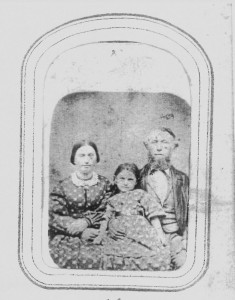
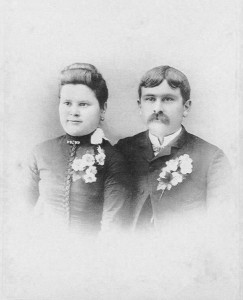
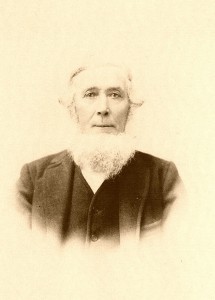
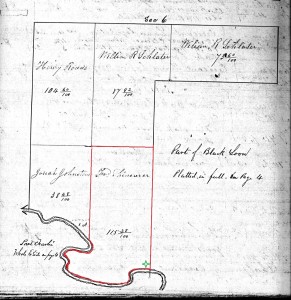

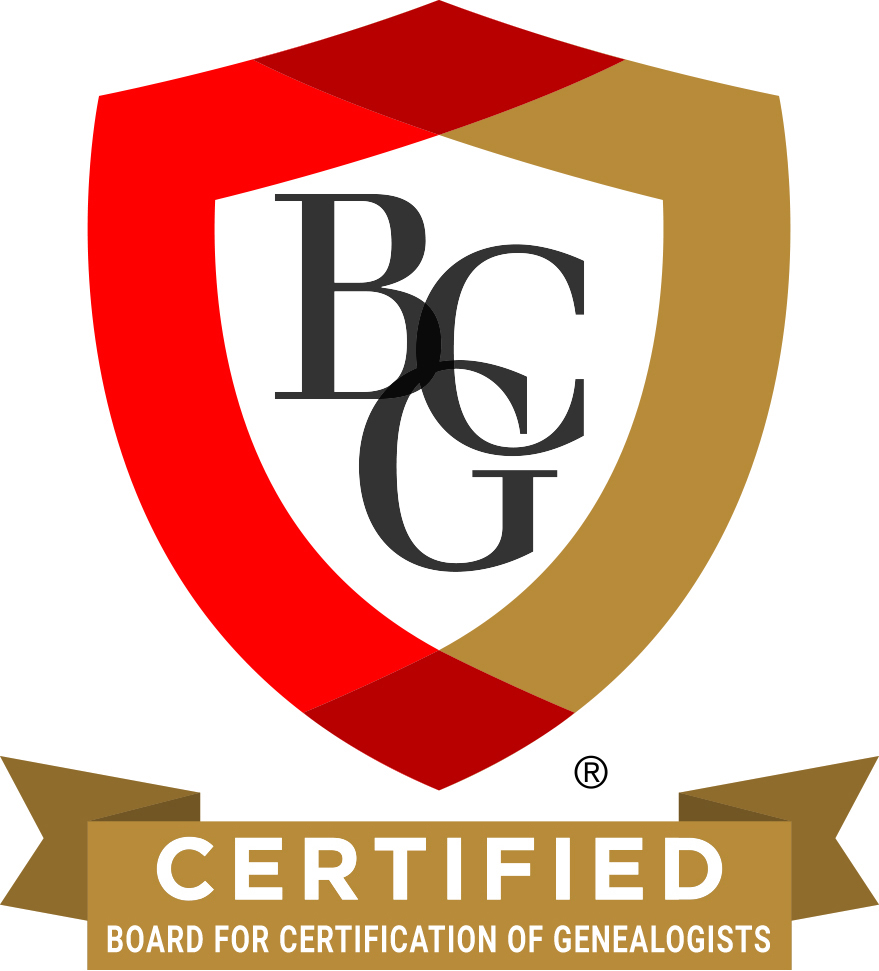
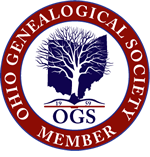

Thank you, Gloria. Great to hear from you and wishing you a nice spring and summer as well.
Thank you Karen. It was great to see them in their younger years. I always find your articles so interesting.…
What a story! I knew Henry Kissinger was in the 84th but have not corresponded with anyone connected to him.…
My father , Raymond Eugene Fairchild was also in the 84th infantry 333rd division Was in the Bulge and afterwards…
Very interesting. Thank you for that information. You are certainly the expert on early local history. We very much enjoyed…